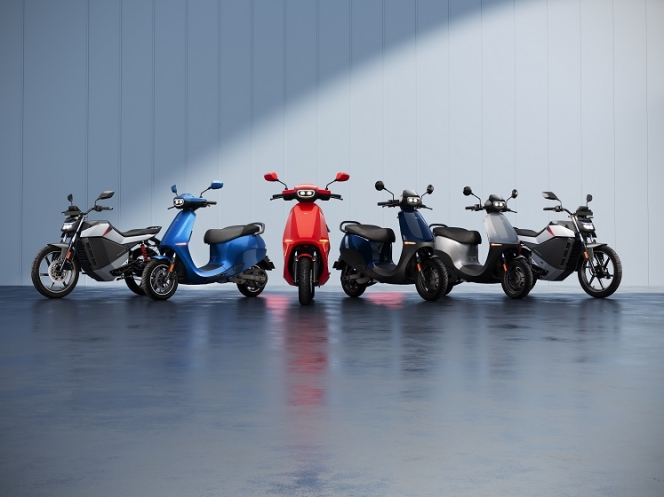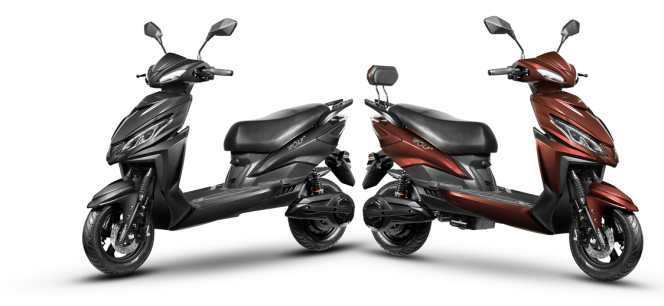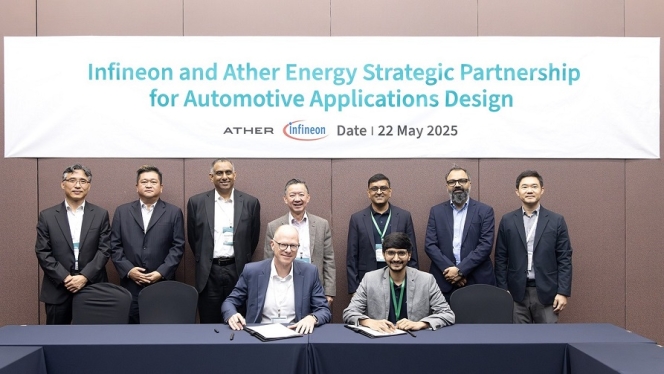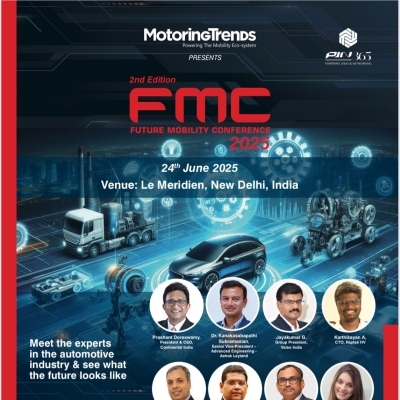
Hyundai Motor Company has unveiled the ‘Inster’, a new sub-compact electric vehicle at the Busan International Mobility Show 2024.
Exterior
Built on the ‘Casper’, a Korea-specific, petrol sub-compact SUV introduced in 2021, the Inster’s design gets an extended body and wheelbase. With the expanded dimensions, the Inster is positioned between traditional A-segment sub-compact city cars and larger B-segment compact models.
The exterior design is characterised by smooth, rounded edges, bulged fenders, a circuit board-style bumper and a skid plate at the front and rear.
The Inster’s gets LED daytime running light signature and pixel-graphic turn signals, tail lamp and bumpers. LED projection headlamps and a two-tone exterior with a blacked-out roof are also offered on some variants. The Inster gets 15-inch steel wheels with wheel covers, 15-inch alloy wheels or 17-inch alloy wheels depending on the variant.
Exterior colour choices include Atlas White, Tomboy Khaki, Bijarim Khaki Matte and Unbleached Ivory, as well as several new paint-jobs, such as Sienna Orange Metallic, Aero Silver Matte, Dusk Blue Matte, Buttercream Yellow Pearl, and Abyss Black Pearl. Some exterior colour choices will be available in two-tone combinations with a contrasting black roof. The paint of the Inster, Hyundai claims, is sustainable featuring black high-gloss recycled paint, which replaces the carbon black pigment traditionally used in black paint with a colouring made from recycled waste tires.
Interior
On the inside, the Inster features a 10.25-inch digital cluster, a 10.25-inch infotainment touchscreen with navigation and a wireless charging dock as a part of the centre console. The pixel theme is repeated inside, also featuring customisable upper door trim garnishes for owners to further personalise the vehicle.
The Inster’s front row seating provides walk-through access and all seats can be folded flat – including the driver’s seat – for increased flexibility. A front bench seat option and heated front seats and steering wheel are also available. The second-row seats are slidable, can recline and also split 50-50.
Interior trim choices include Black, and Khaki Brown and Newtro Beige two-tone with full cloth trim. According to Hyundai, the interior of the Inster also uses sustainable materials like recycled polyethylene terephthalate (PET) from bottles and bio-polypropylene material extracted from sugarcane are used inside.
Hyundai says that the Inster will launch first in Korea this summer, followed by Europe, the Middle East and Asia Pacific in due course. Most equipment and technologies will come fitted as standard with extra convenience and design features available as options. The exact specifications is set to be confirmed closer to the launch. Hyundai has also planned an additional variant in the future called ‘Inster Cross’ featuring a more rugged, outdoor-focused design.
"With Inster, we've taken the small SUV image to a bold new place for the global audience," said Simon Loasby, Senior Vice-President and Head of the Hyundai Design Center. "Inster punches well above its weight with distinctive design and an interior that maximises its potential in exciting, customer-centric ways. With Inster we're redefining what it means to drive a sub-compact EV," added Simon.
Performance and Range
The Inster EV is equipped with a 42 kWh battery as standard, and is also available with a long-range 49 kWh battery as an option. Both models are powered by a single motor that delivers 71.1 kW (97 PS) in the base variant and 84.5 kW (115 PS) in the long-range model. Both versions offer 147 Nm of torque.
With a claimed range of 355km on a single charge for the long-range model, the Inster requires an estimated energy consumption of 15.3 kWh/100 km. (Both figures are for the 15-inch wheels) The standard range model gets a claimed range of more than 300km.
The sub-compact EV can charge from 10 to 80 percent in around 30 minutes under optimal conditions when using a 120 kW DC high-power charging station. It also comes equipped with an 11 kW on-board charger as standard, while a battery heating system and high-efficiency heat pump are available.
External and internal Vehicle-to-Load (V2L) functionality provides power for external devices (110V/220V), allowing bi-directional charging without requiring additional equipment. This enables customers to freely use or charge devices such as electric bicycles, scooters and camping equipment.
Specifications and Features
| Dimensions (mm) | Length: 3,825 Wheelbase: 2,580, Width:1,610 Height: 1,575 |
| Luggage space (VDA) | 280 litres (up to 351 litres with sliding rear seats) |
| Wheel options | 17-inch alloy, 15-inch alloy, 15-inch steel with wheel covers |
| Battery | Standard: 42 kWh / Long-Range: 49 kWh |
| Voltage | Standard: 266 V / Long-Range: 310 V |
| Max power | Standard: 71.1 kW and 97 PS / Long-Range: 84.5 kW and 115 PS |
| Max speed | Standard: 140 km/h / Long-Range: 150 km/h |
| 0-100 km/h | Standard: 11.7 s / Long-Range: 10.6 s |
| Projected consumption | 15.3 kWh/ 100 km (with 15-inch wheels) |
| AC charging time (at OBC power) | Standard: 4 hours (16A) Long-Range: 4 hours 35 minutes (16A) |
| ADAS features | Surround View Monitor (SVM), Parking Collision-Avoidance Assist Rear (PCA-R), Blind-spot View Monitor (BVM), Forward Collision-Avoidance Assist 1.5 (FCA 1.5), Lane Keeping Assist (LKA) and Lane Following Assist (LFA), Blind-Spot Collision-Avoidance Assist (BCA), Rear Cross-Traffic Collision-Avoidance Assist (RCCA), Safe Exit Warning (SEW), Smart Cruise Control (SCC)w/ Stop and Go, Highway Driving Assist 1.5 (HDA 1.5), Intelligent Speed Limit Assist (ISLA), Driver Attention Warning (DAW), High Beam Assist (HBA), Leading Vehicle Departure Alert (LVDA) and Rear Occupant Alert (ROA), Parking Distance Warning (PDW) Front and Rear, Rear View Monitor (RVM). |
*Specifications are based on European-model Hyundai Inster. Features, technology and claimed figures may differ depending on the market.
Ather Energy Appoints Anjani Kumar As Chief Digital & Information Officer
- By MT Bureau
- May 30, 2025

Bengaluru-based electric vehicle maker Ather Energy has appointed Anjani Kumar as its new Chief Digital & Information Officer (CDIO). This
In his new role, Kumar will be tasked for shaping and executing Ather's comprehensive digital strategy. He'll be responsible for strengthening the company's technological foundation across vital areas like product development, manufacturing and enhancing customer experience. His main goal is to ensure technology remains central to Ather's ambitious expansion plans.
Anjani Kumar brings over 24 years of experience, having led digital transformation and IT innovation in diverse sectors, including automotive, technology, logistics, pharmaceuticals and BFSI. His extensive career includes senior leadership positions at prominent Fortune 500 companies such as IBM, Nissan, Cognizant, Strides Pharma and Tata AIG.
At Ather Energy, Kumar will oversee a wide range of digital initiatives. This includes leading the company's overall digital strategy, driving the development of new digital platforms and products, enhancing IT infrastructure with a strong focus on cybersecurity and significantly boosting Ather's data-driven capabilities. He will manage teams responsible for WebTech, IT & Security, Manufacturing Execution Systems (MES), Business Intelligence and Digital Engineering.
Swapnil Jain, Executive Director and CTO, Ather Energy, said, "Ather has been digital-first and data-driven from day one, with a strong focus on systems from products to manufacturing to sales. As we grow rapidly as an organisation, with multiple products, new business models, and deeper software integration, the complexity naturally increases. Building robust systems with a backbone to leverage AI on top of enterprise data is going to be critical for our growth."
"Bringing all digital functions under a single leadership role helps build a unified digital thread across the organisation. Anjani's deep cross-industry experience will play a key role in simplifying and strengthening our complex digital infrastructure. We are very focused on building a stronger tech-led advantage for Ather’s future,” said Jain,
Anjani Kumar, added, "I believe digital and information strategies are at the crux of the future of mobility. The potential of electric mobility in India is immense, and I look forward to collaborating with our talented engineers, business leaders, and founders to harness the power of digital innovation. By bringing in my multi-domain digital experience and combining it with Ather’s commitment to first-principles thinking and deep engineering ethos, we will drive significant and transformative advancements. I’m excited to contribute to Ather’s journey.”
Kumar holds a Post Graduate degree in Marketing & Management from Kelley School of Business, Indiana University (USA) and a B.E. in Mechanical Engineering from NIT Rourkela.
Ola Electric Targets Course to Profitability Despite FY2025 Revenue Decline
- By MT Bureau
- May 29, 2025

Ola Electric, a leading electric two-wheeler maker in the country, has announced its financial results for FY2025. Although the company continued its leadership position in the market, its revenue fell marginally to INR 46.45 billion in FY2025 from INR 51.26 billion last year.
In spite of the revenue drop, Ola Electric continued its leadership in the electric scooter segment, shipping 359,221 units in FY2025, compared to 329,549 units in FY2024. The growth came mainly from the strong performance of its enhanced Gen 3 S1 scooter range, allowing the firm to attain 30 percent market share, based on VAHAN data.
The company stated it is making a big push towards profitability, led by two main internal initiatives: ‘Project Lakshya’ and ‘Project Vistaar.’
Under Project Lakshya, Ola Electric has a target cost structure of INR 1.10 billion for its auto business. The company has been able to bring down costs impressively to INR 1.21 billion in April 2025 and is likely to reach the INR 1.10 billion target in June 2025.
To supplement this, Project Vistaar, launched in November 2024, was network transformation-centric. The effort has significantly enhanced delivery time (from 12 days to 3-4 days), optimised inventory management and facilitated same-day delivery through its "HyperDelivery’ facility. Consequently, Ola Electric grew its footprint to emerge as India's largest EV distribution network in FY2025 with over 4,000 touchpoints, of which over 50 percent were in Tier 3 and rural markets.
These strategic actions have helped Ola Electric lower its auto segment EBITDA break-point structurally to below 25,000 units per month. This reduced level, combined with expected industry expansion, growing S1 market share, and the recent launch of motorcycles, sets the company up to achieve Auto segment EBITDA profitability during FY2026.
Ola Electric stated that early signs in April and May 2025 indicate encouraging business traction, with higher Gross Margins (excluding the benefits of PLI) and lower operating expenses. The company also noted stronger monetisation through add-ons, with Gen 3 sales more than doubling that of Gen 2. Encouraging demand for the recently launched Roadster Motorcycles is also supporting this encouraging trend. It expects this healthy performance to sustain, resulting in Auto segment EBITDA profitability in FY2026.
The launch of the Gen 3 S1 portfolio in Q4 FY2025 contributed significantly to the company's enhanced Gross Margins. For Q1 FY2026 posted a further 10 percentage point increase in Gross Margins over Q4 FY2025. This result will benefit further from the ramp-up in the Gen 3 platform. Significantly, the gross margins as of date do not account for PLI benefits for Gen 3, which will accrue in Q2 FY26. The company estimates its Gross Margins to be around 35 percent for Q2 FY2026 with PLI.
Ola Electric's S1 lineup continues to be extensive, with almost 1 million units sold in 14 products in Gen 2 and Gen 3. The Gen 3 platform provides 20 percent more peak power, 20 percent more range and an 11 percent price cut compared to its predecessor. The company further pushed mass segment EV penetration via its S1 X, which experienced a 3.5x year-on-year rise in deliveries to 196,123 units in FY25.
It was just recently that the company has begun deliveries for the Roadster X electric motorcycle, which it said addresses a significantly underpenetrated segment. The Roadster X comes with a mid-drive motor, chain drive, and onboard MCU for improved performance and safety. A first in the industry in the Roadster X series is the implementation of flat cables in the motorcycles.
The company is also scaling up output at its Ola Gigafactory, with the yields of its indigenously created ‘Bharat Cell’ continuing to improve. The cell is under rigorous testing of performance, lifecycle, safety and phased commercialisation can be anticipated in the months ahead. The phased rollout strategy is designed to balance supply chain synergies, maintain quality consistency and collect real-world performance data prior to mass commercialisation.
Ola Electric indicates that FY2026 will be a year of scaling revenue and riding operating efficiencies to drive sustainable profitability. With a strong product roadmap, vertical integration, strong R&D emphasis and building out distribution and service infrastructure.
- Wardwizard Innovations & Mobility
- Joy e-bike
- Joy e-rik
- XiCon International
- Kaiser Corporation
- Wolf+
- Yatin Gupte
- Lyla Mehta
Wardwizard To Lease 7,500 E-Scooters To XiCon International
- By MT Bureau
- May 28, 2025

Vadodara-based Wardwizard Innovations & Mobility, an electric vehicle manufacturer under the 'Joy e-bike' and 'Joy e-rik' brand, has partnered XiCon International, a Mumbai-based engineering and manufacturing company and a subsidiary of Kaiser Corporation.
Under the partnership, XiCon will lease 7,500 Wolf+ electric scooters from Wardwizard to enhance last-mile delivery solutions, marking its entry into the electric mobility sector and expanding its diversified portfolio across power, telecom and infrastructure.
The EV maker will supply the e-scooter in the next two years, across key cities including Mumbai, Ahmedabad, Delhi and Pune, with plans to expand to other regions as operations scale.
The MoU also outlines a comprehensive framework for deployment, operation and maintenance of the electric scooters, focusing on enhancing delivery efficiency while promoting eco-friendly transportation. In addition, to supplying e-scooters Wardwizard will also be responsible for setting up service-cum-charging stations and manage all necessary spare parts, batteries and technical support.
XiCon on its part will manage vehicle allocation, third-party tie-ups, app development and marketing initiative to ensure maximum utilisation.
Yatin Gupte, Chairman & Managing Director, Wardwizard Innovations & Mobility Limited, said, “At Wardwizard, we are committed to accelerating the adoption of electric mobility in India through strategic partnerships and innovative business models. Our association with XiCon International is a significant step toward building a robust ecosystem for last-mile connectivity powered by clean energy. By offering reliable and scalable EV solutions, we aim to not only support delivery services but also contribute to India’s larger goal of sustainable urban mobility. We are starting with some major cities and are sure to expand to further cities by the end of this year”
Lyla Mehta, Director, Xicon International, said, "This MoU with Wardwizard marks a pivotal moment in our mission to build more sustainable and effective delivery systems. Through this association, Xicon is actively electrifying its fleet and contributing to the advancement of sustainable mobility. The Wolf+ scooters are perfect for navigating city streets and will allow us to provide a truly eco-friendly and affordable option for those critical final miles of delivery. We’re look forward to seeing the electric scooters on the road and to grow this partnership for mutual and long-term benefit."
Ather Energy, Infineon Tech To Accelerate Innovation In Light EV Segment
- By MT Bureau
- May 28, 2025

Bengaluru-based electric two-wheeler major Ather Energy has signed a Memorandum of Understanding (MoU) with Infineon Technologies Asia Pacific, a global leader in semiconductor solutions, to accelerate innovation in the Indian electric vehicle industry.
The partnership will focus on advancing semiconductor technologies to support light electric vehicles (LEVs), charging infrastructure and safety. As per the understanding, Infineon will bring its expertise on cutting-edge semiconductor, microcontrollers and automotive related sensors solutions, while Ather will bring its expertise in designing electric two-wheelers.
Swapnil Jain, Executive Director and CTO, Ather Energy, said: “At Ather, we’ve always believed that building great EVs starts with getting the fundamentals right – performance, efficiency and reliability. Our approach has always been grounded in first principles thinking and deep engineering, questioning how every system can be made better, faster and more efficient. That’s where semiconductor innovation becomes critical. Infineon’s leadership in semiconductors and system solutions brings deep expertise that aligns with our engineering-first approach. Our partnership with Infineon gives us access to advanced technologies that can help us improve key systems, from charging to safety and explore ways to reduce system complexity and cost. We’re looking forward to seeing how this collaboration can help us push the boundaries, not just for our products, but for the larger EV ecosystem in India.”
Peter Schaefer, Executive Vice President and Chief Sales Officer, Automotive, Infineon, said: “India is one of the fastest-growing EV markets globally, and electric two-wheelers are at the heart of this transformation. We are thrilled to partner with Ather Energy to enable the next generation of sustainable mobility solutions. Our advanced SiC and GaN technologies will help drive energy-efficient and high-performance electric vehicles. This partnership will foster innovation that contributes meaningfully to India’s ambitious objective to reach a 30 percent sales share for EVs by 2030.”
The partners will explore sensing and safety innovations to enhance vehicle safety and user experience.




Comments (0)
ADD COMMENT